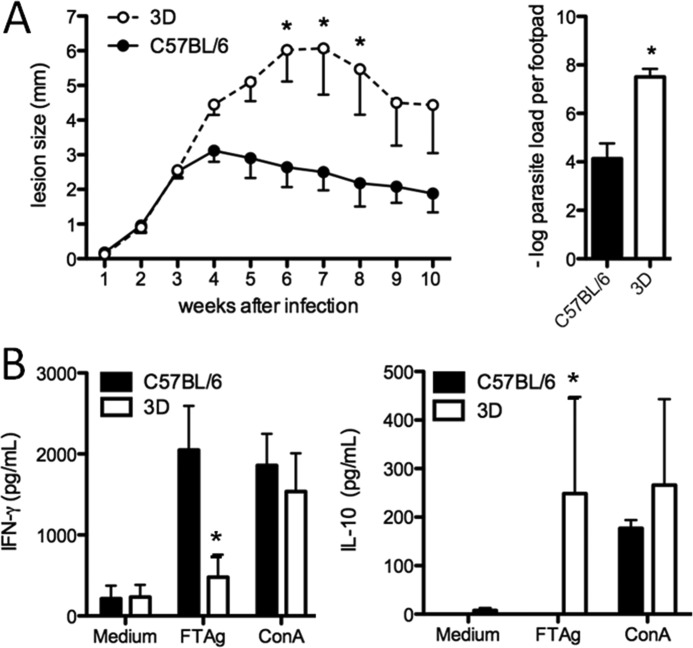FIGURE 1.
UNC93B1 mutant mice show larger footpad lesions and higher parasite load after infection with L. major when compared with C57BL/6 wild type mice. A, mice were infected with 1 × 106 promastigotes subcutaneously in the right hind footpad. The course of infection was monitored weekly and the diameter of the primary footpad lesions was measured. The mean size of lesions and S.E. are shown (five mice per group). Bar graphs correspond to the parasite load quantitation in lesions by limiting dilution analysis at week 10 post-infection. B, spleens were harvested from infected mice, and cells were cultured with no stimulation, under the stimuli of 1 × 106 FTAg or Concanavalin A (10 μg/ml). Accumulation of IFN-γ and IL-10 in supernatants of cells cultured for 24 h was evaluated by ELISA assay as described under “Experimental Procedures.” Results are expressed as mean and S.E. of duplicate measurements of four animals per group. Asterisks indicate statistically significance (p < 0.05), when comparing triple deficient (3D) and WT mice by two-way ANOVA with Bonferroni's post-test. The data shown are representative of three independent experiments.

